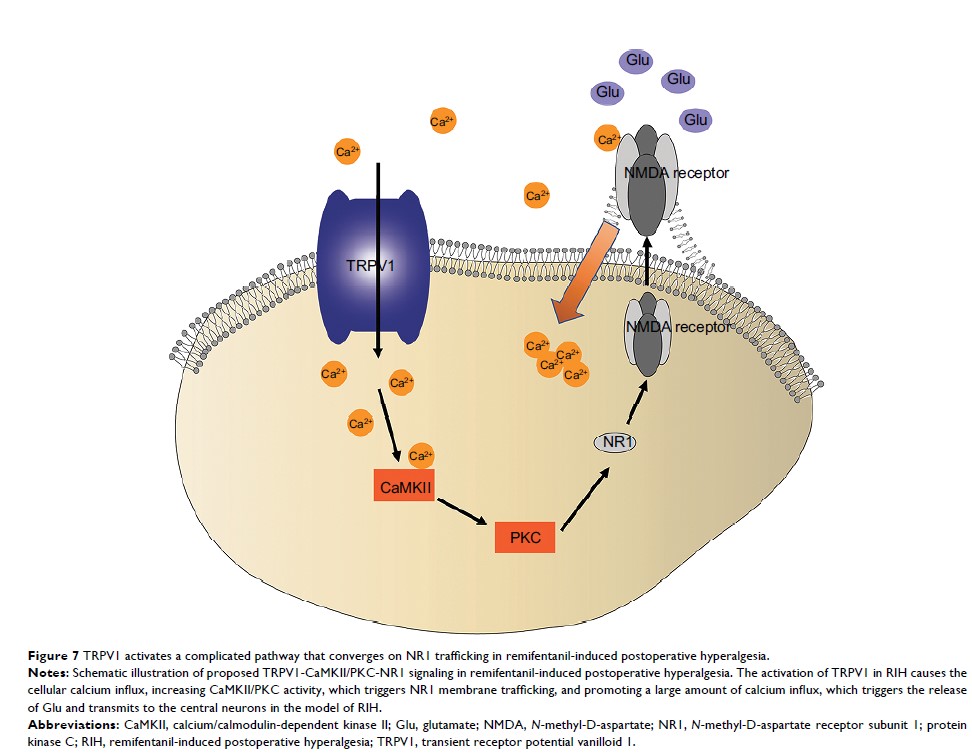9 0 8 0 2
论文已发表
注册即可获取德孚的最新动态
IF 收录期刊
- 2.6 Breast Cancer (Dove Med Press)
- 3.9 Clin Epidemiol
- 3.3 Cancer Manag Res
- 3.9 Infect Drug Resist
- 3.6 Clin Interv Aging
- 4.8 Drug Des Dev Ther
- 2.8 Int J Chronic Obstr
- 8.0 Int J Nanomed
- 2.3 Int J Women's Health
- 3.2 Neuropsych Dis Treat
- 4.0 OncoTargets Ther
- 2.2 Patient Prefer Adher
- 2.8 Ther Clin Risk Manag
- 2.7 J Pain Res
- 3.3 Diabet Metab Synd Ob
- 4.3 Psychol Res Behav Ma
- 3.4 Nat Sci Sleep
- 1.9 Pharmgenomics Pers Med
- 3.5 Risk Manag Healthc Policy
- 4.5 J Inflamm Res
- 2.3 Int J Gen Med
- 4.1 J Hepatocell Carcinoma
- 3.2 J Asthma Allergy
- 2.3 Clin Cosmet Investig Dermatol
- 3.3 J Multidiscip Healthc

TRPV1 通道通过调节背根神经节 NMDA 受体运输,促进瑞芬太尼诱导的术后痛觉过敏
Authors Song C, Liu P, Zhao Q, Guo S, Wang G
Received 5 September 2018
Accepted for publication 22 November 2018
Published 15 February 2019 Volume 2019:12 Pages 667—677
DOI https://doi.org/10.2147/JPR.S186591
Checked for plagiarism Yes
Review by Single-blind
Peer reviewers approved by Dr Colin Mak
Peer reviewer comments 2
Editor who approved publication: Dr Michael Ueberall
Background: Remifentanil
is widely used in general anesthesia due to its reliability and rapid onset.
However, remifentanil-induced postoperative hyperalgesia might be a challenge
nowadays. Accumulating evidence suggests that the transient receptor potential
vanilloid 1 (TRPV1) was involved in the development of neuropathic pain and
hyperalgesia. However, the contribution of TRPV1 in modulating
remifentanil-induced postoperative hyperalgesia is still unknown. The aim of
this study is the contribution of TRPV1 to the surface expression of
N-methyl-d-aspartate (NMDA) receptors in remifentanil-induced postoperative
hyperalgesia.
Methods: The hot
plate test and the Von Frey test were performed to evaluate thermal and
mechanical hyperalgesia. Capsazepine (CPZ) was administrated intrathecally to
confirm our results. TRPV1, NMDA receptors, CaMKII
(calcium/calmodulin-dependent kinase II), and protein kinase C (PKC) in the
dorsal root ganglion (DRG) were detected by Western blotting. Immunofluorescence
assay was applied to analyze the distribution of TRPV1 and the relationship
between TRPV1 and NMDA receptor subunit 1 (NR1).
Results: Remifentanil-induced
both thermal and mechanical postoperative hyperalgesia. Here, we found the
membrane trafficking of NR1, possibly due to the activation of TRPV1 in DRG
neurons after remifentanil infusion. Furthermore, intrathecal injection of CPZ
was able to relieve remifentanil-induced postoperative hyperalgesia according
to a behavioral test and CPZ confirmed that TRPV1 is involved in NR1
trafficking. In addition, CaMKII/PKC but not protein kinase A (PKA) contributed
to remifentanil-induced postoperative hyperalgesia.
Conclusion: Our study
demonstrates that TRPV1 receptors are involved in remifentanil-induced
postoperative hyperalgesia. TRPV1 contributes to the persistence of
remifentanil-induced postoperative hyperalgesia through the trafficking of NMDA
receptors via the activation of CaMKII-PKC signaling pathways in DRG neurons.
Keywords: opioid,
pain, TRPV1, NMDA receptor, CaMKII
